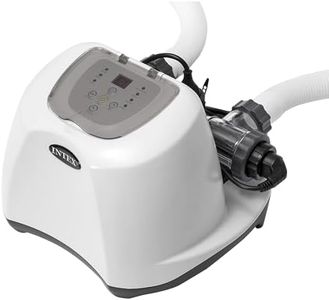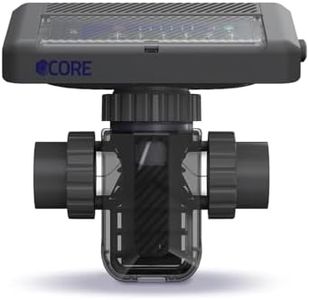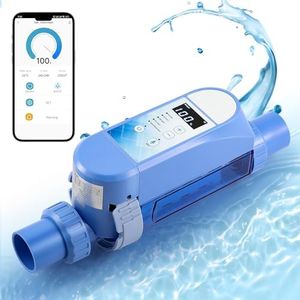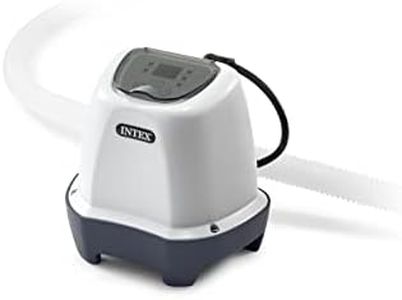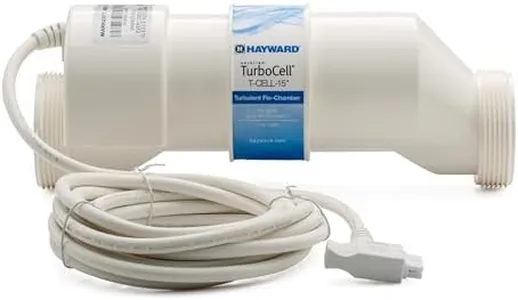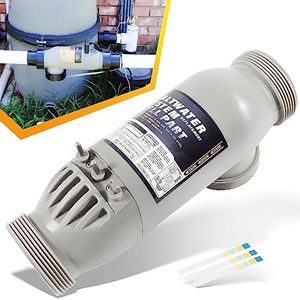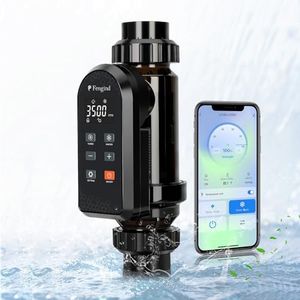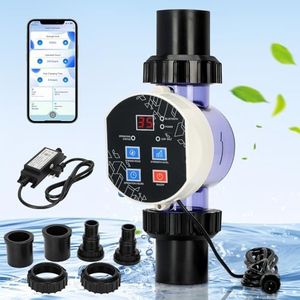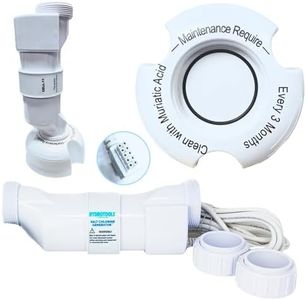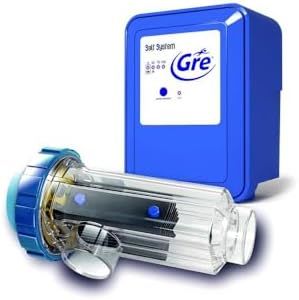We Use CookiesWe use cookies to enhance the security, performance,
functionality and for analytical and promotional activities. By continuing to browse this site you
are agreeing to our privacy policy
10 Best Salt Water Pool Chlorinators
From leading brands and best sellers available on the web.By clicking on a link to a third party's website, log data is shared with that third party.
Buying Guide for the Best Salt Water Pool Chlorinators
Choosing a salt-water pool chlorinator involves understanding how these devices maintain clean, sanitized water while offering an alternative to traditional chlorine pools. By converting salt into chlorine through a process called electrolysis, saltwater chlorinators offer smoother, gentler water that's easier on your skin and eyes. To find the best fit for your pool and lifestyle, it's important to focus on several core features. This will help ensure that your pool system is efficient, low-maintenance, and suitable for your needs.Pool Size CompatibilityPool size compatibility refers to the maximum volume of water the chlorinator can handle effectively, typically measured in gallons or liters. This is crucial because using a chlorinator that's too small will result in under-sanitized water, while one that's too large could be inefficient or more expensive to run. There are generally small (up to 15,000 gallons), medium (15,000 to 30,000 gallons), and large (over 30,000 gallons) segments. Choose one based on your actual pool size; always slightly round up if you're between sizes to ensure optimal performance.
Chlorine OutputChlorine output indicates the amount of chlorine the device can generate per day, usually listed in pounds or grams. This is important for maintaining clean, algae-free water. Lower output units are suited for small pools or spas, while higher output is needed for large or heavily-used pools. Think about your pool’s usage, the local climate (warmer weather may require more chlorine), and opt for a unit that matches these needs to ensure effective sanitation without overworking the system.
Control FeaturesControl features determine how you manage and customize the chlorination process, which can range from basic manual operation to advanced digital controls with automated schedules and smart sensors. Basic units let you turn systems on or off, while advanced models offer touchscreens, mobile app integration, and automatic adjustments. If you prefer simplicity, stick to manual controls; if you like automation or want to monitor your pool remotely, seek models with smart features.
Self-Cleaning FunctionA self-cleaning function allows the chlorinator to periodically reverse polarity, which helps prevent calcium and mineral buildup on the cell plates. This feature is essential for hassle-free maintenance, particularly in areas with hard water. Units are either manual or have automatic self-cleaning. If you want to minimize cleaning and maintenance time, opt for a chlorinator with an automatic self-cleaning feature.
Salt Level Range RequiredSalt level requirement indicates the range of salt concentration the chlorinator needs in the pool to work effectively, typically measured in parts per million (ppm). Some systems operate at lower salt levels for gentler water, while others require higher concentrations for optimal output. Pick a system that aligns with your sensitivity to salt, maintenance routine, and regional water quality. If you prefer softer water and less salty taste, go for one with a lower salt requirement.
Installation and Maintenance EaseThis refers to how easy it is to set up and care for the chlorinator system. Some systems are designed for simple, do-it-yourself installation and routine care, while others may need professional setup or more intensive maintenance. Consider your comfort with installation tasks and how much time you want to spend on upkeep. If you prefer hands-off operation, look for user-friendly models with accessible components and clear instructions.
Cell LifespanThe cell lifespan denotes how long the chlorinator cell is expected to last before needing replacement, usually measured in hours of operation or years of typical use. A longer lifespan reduces the frequency and cost of replacements. Lifespans can vary greatly, often ranging from 3 to 7 years depending on use and maintenance. If you want to minimize long-term maintenance, prioritize models with longer-rated cell life and a good warranty.


